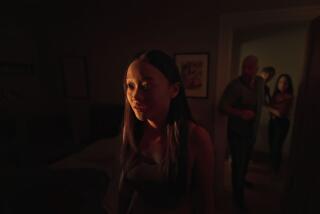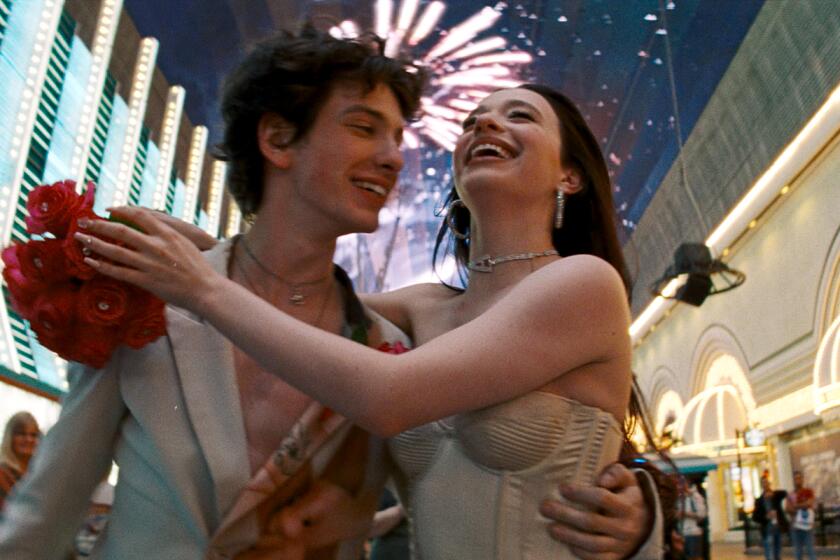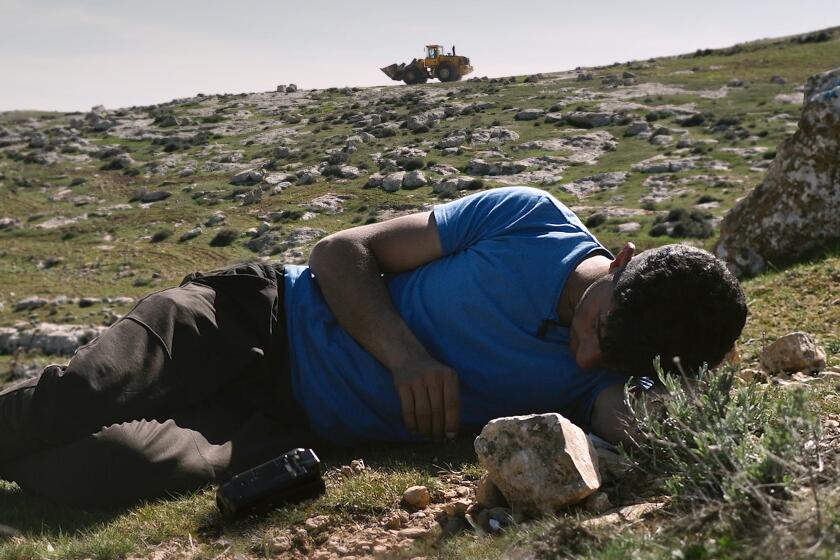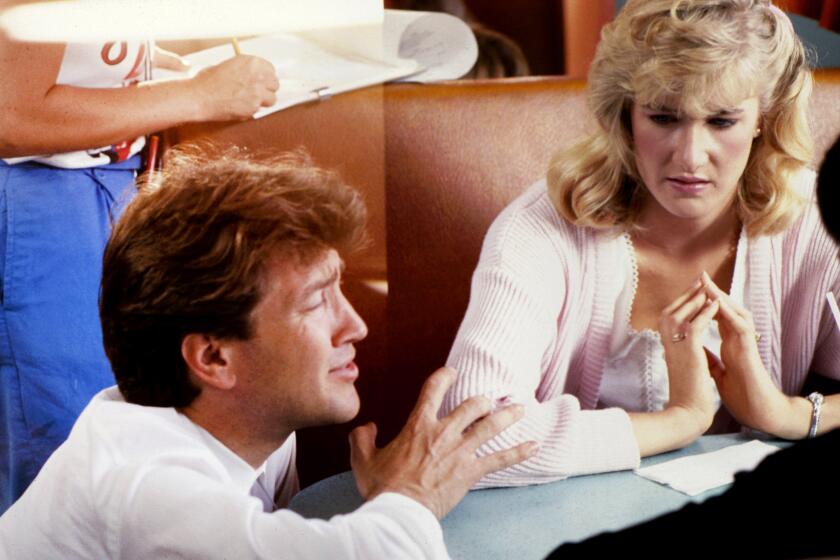‘Haunting’ Lack of Fright in House, Special Effects
- Share via
“The Haunting” is such a feeble frightfest that even its characters seem irked at it. “You brought us here to scare us, is that it?” is the disbelieving reaction of the lovely Theo (Catherine Zeta-Jones), a sentiment that people who end up watching the film instead of participating in it will likely share.
A picture with an impressive pedigree, “The Haunting” is based on Shirley Jackson’s admired novel, “The Haunting of Hill House” and was expertly filmed under the same name by director Robert Wise with stars Julie Harris and Claire Bloom back in 1963.
But the current big-bucks version, directed by Jan De Bont (“Speed,” “Twister,” the abysmal “Speed 2: Cruise Control”), demonstrates that scaring people is harder than it looks. In fact, this “Haunting” almost serves as a reverse image of a successful film, demonstrating by what it lacks exactly what is needed to do things right.
While the original film sensibly featured a scientific type studying paranormal phenomena, this time around Dr. David Marrow (Liam Neeson) is investigating the dynamics of fear. What he tells his subjects, however, is that he’s studying people who have trouble sleeping. “You don’t tell rats they’re actually in a maze,” the doctor says in his own defense, ignoring the question of how you’d go about informing rats even if you wanted to.
Aside from the glamorous Theo, grandly introduced as a bisexual artist with a complicated love life but soon reduced by David Self’s tepid script to Just Another Pretty Face, two other subjects face the music with the doctor.
One is Luke (Owen Wilson), a likable cynic who exists mainly to look cute. More central is the character of Eleanor, familiarly known as Nell (Lili Taylor), an initially tentative young woman who’s spent the last decade caring for her dying, demanding mother.
These folks all gather in Hill House, a grand pile built in the Berkshires over one hundred years ago by Hugh Crain, a childless textile magnate who, like the owner of San Jose’s Winchester Mystery House, just kept adding and adding to what was a fairly sizable mansion to begin with.
Though it’s meant to be “The Haunting’s” pride, that house is the source of problems. First of all, it doesn’t take a study of the credits (which reveal it to be England’s Harlaxton Manor) to know that architecturally this place has as much chance of being in the Berkshires as Buckingham Palace. Fright often depends on verisimilitude, and that gets sacrificed right off the bat.
More to the point, though Hill House’s caretakers (Bruce Dern and Marian Seldes) moan and groan about needing to be miles away by dark, the plain fact is that this mansion is way too lavish and pristine, too sumptuous in its appointments, to unnerve anyone except a less-is-more devotee of the Bauhaus School.
Top-drawer production designer Eugenio Zanetti (“What Dreams May Come” and the Oscar-winning “Restoration”) outdid himself here, filling some of the largest, most elaborate sets ever created with fabulous statuary, breathtaking furniture, doors the size of redwoods and a dazzling mirrored ballroom with a revolving floor.
The house is truly, as one of the characters says, “Charles Foster Kane meets the Munsters,” but though decorators will no doubt be studying the video for years to come (with the sound off, to be sure), all that luxury turns out to have a deadening, soporific effect.
The same situation occurs with “The Haunting’s” elaborate and expensive computer-generated special effects. Shapes form in curtains, immovable objects take on life, doors turn into arms and huge heads morph out of ceilings, but instead of making the film scary, all this technological gimmickry simply weighs it down.
The problem with computer-generated images in a film like “The Haunting” is that it’s all too easy for filmmakers to believe that what money can buy is a suitable replacement for what money can’t. If we just get the effects right, the feeling seems to be, the fright will take care of itself.
In fact, as the black and white original “Haunting” demonstrated, what makes a film scary has more to do with sensibility, conviction and an understanding of the dark places of the human psyche than an ability to orchestrate expensive set pieces. “The Haunting” has the hardware, but it takes more than that to terrify, even now.
* Rating: PG-13 for intense horror sequences. Times guidelines: bump-in-the-night scares, including a skeleton popping up unexpectedly, and an intense ending.
‘The Haunting’
Liam Neeson: Dr. David Marrow
Catherine Zeta-Jones: Theo
Owen Wilson: Luke Sanderson
Lili Taylor: Nell
A Roth/Arnold production, released by DreamWorks Pictures. Director Jan De Bont. Producers Susan Arnold, Donna Arkoff Roth, Colin Wilson. Executive producer Jan De Bont. Screenplay by David Self, based on “The Haunting of Hill House” by Shirley Jackson. Cinematographer Karl Walter Lindenlaub. Editor Michael Kahn. Costumes Ellen Mirojnick. Music Jerry Goldsmith. Production design Eugenio Zanetti. Supervising art director Tomas Voth. Art directors Martin Laing, Troy Sizemore. Set decorator Cindy Carr. Running time: 1 hour, 52 minutes.
In general release throughout Southern California.
More to Read
Only good movies
Get the Indie Focus newsletter, Mark Olsen's weekly guide to the world of cinema.
You may occasionally receive promotional content from the Los Angeles Times.











